My PBP Bike: Rack and Bag
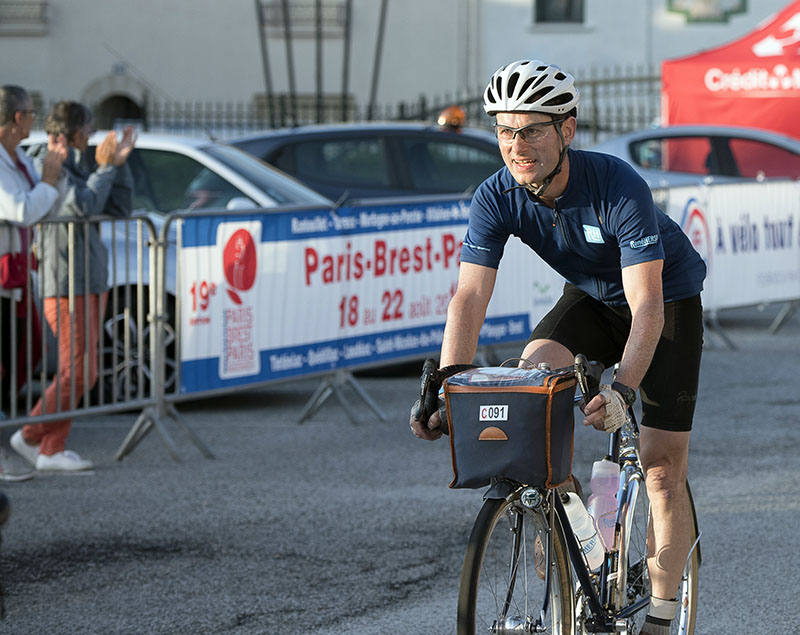
When you ride 1200 km (750 miles) unsupported, almost non-stop, you need to carry a few things. Clothes are the most important – it’s cold at night, warm during the day; it can rain; and you need to be prepared for all of it. You’ll want to carry a little food – being able to eat on your bike cuts the time you’ll spend at the controls. You’ll need to bring spare tubes and maybe a few tools, just in case. You may want to bring a camera, too.
Traditionally, most bikes carried their load on the back. Whether it’s a seat bag, a rack trunk (remember those?) or even rear panniers, putting a load on the rear of the bike seems to be the easiest, most common way. And yet there are many reasons why I prefer a front load.
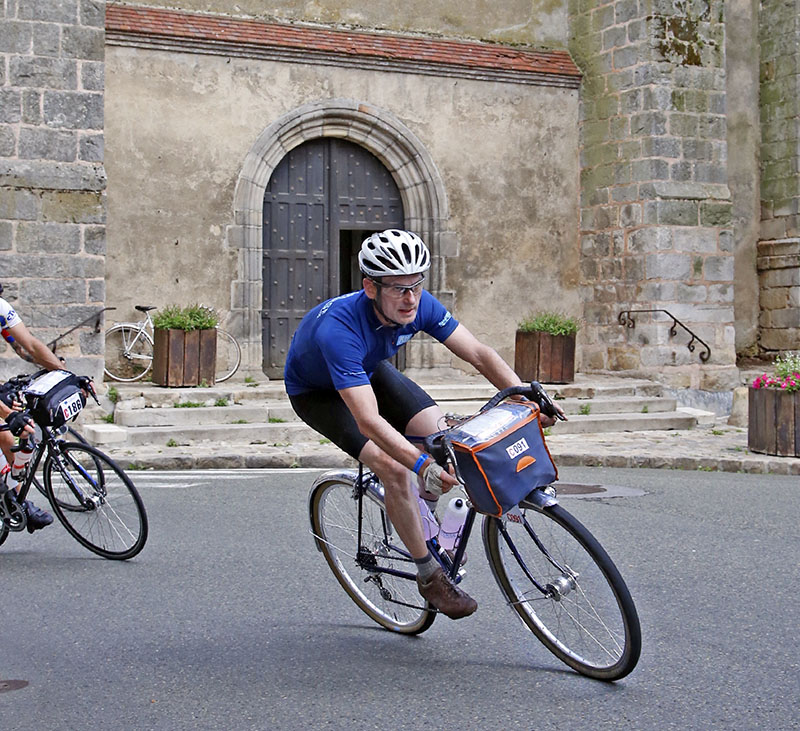
One big reason is the bike’s handling: You balance your bike by moving the front wheel from side to side. The rear wheel isn’t steered – it follows the front wheel, but with a lag and reduced amplitude. That makes a front load easier to balance than a rear load.
You notice this especially when you climb out of the saddle and rock the bike from side to side: A rear load becomes the proverbial tail that wags the dog. The front load is attached to your handlebars, and you always hold those when you ride out of the saddle, so a front load doesn’t really change how the bike climbs.
When you lean the bike hard into a corner, it’s nice when the load doesn’t affect the bike’s handling at all. For that, you need a front-end geometry that is designed for the load, but that’s easy to do on a custom bike.
As an added plus, the bag acts as a fairing when I get in the aero tuck. Strava tells me that on the same courses, I am consistently 2-4 mph faster on the steep downhills when I ride a bike with a handlebar bag.
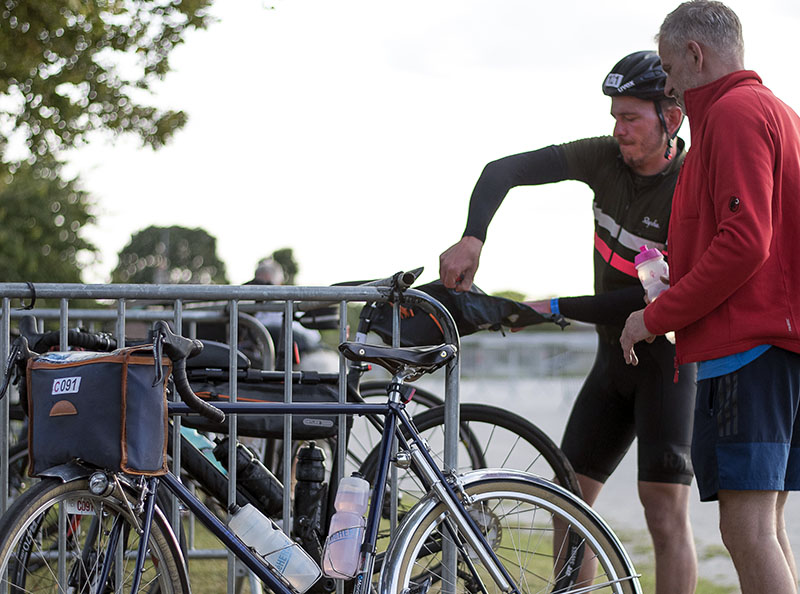
I also like the ease of accessing the contents of a handlebar bag. When you’re tired, it’s not much fun to struggle with your stuff. And if you need something while riding, you have to stop and dismount to access a rear bag.
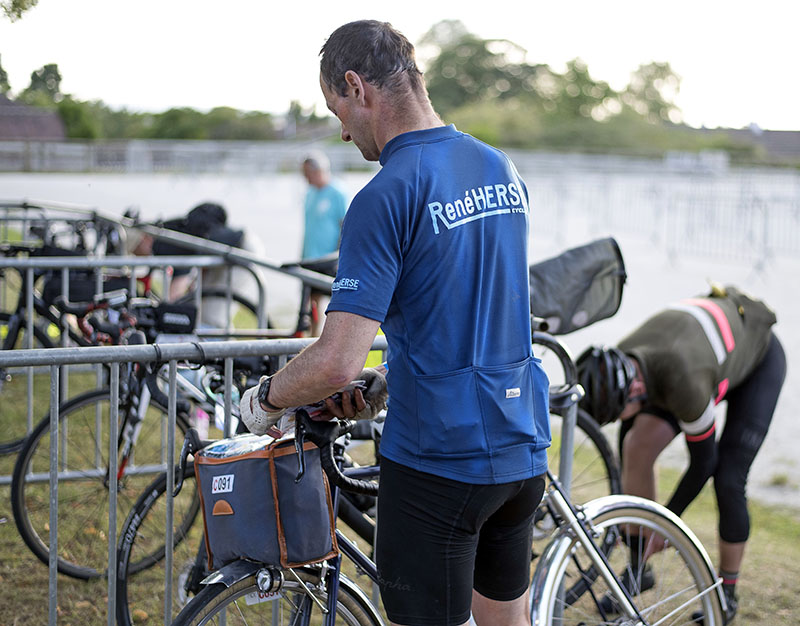
Handlebar bags are easy to access, even while riding. Or you can stop and dig through your bag while straddling the bike. Since the top is held down by elastics, handlebar bags can be overstuffed – useful if you need to carry a little extra food.
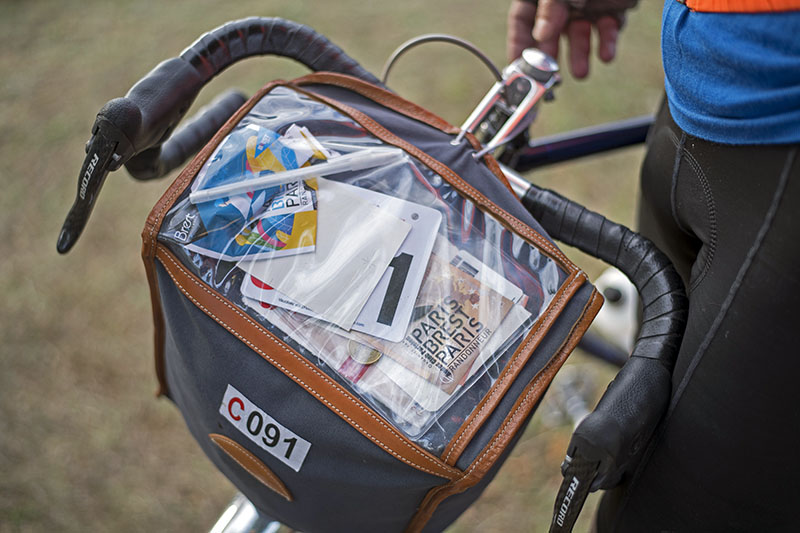
My bag has a map pocket on the top flap. It puts cue sheets or maps where you can easily see them. This not only reduces the risk of getting lost, it also makes riding stress-free: Being able to check easily that you’re on course means you don’t need to worry about it any longer. Before I used a handlebar bag on randonneur rides, I stopped to check and re-check that I really was still on course… And in PBP, the top pocket is useful for my control card, money, etc.
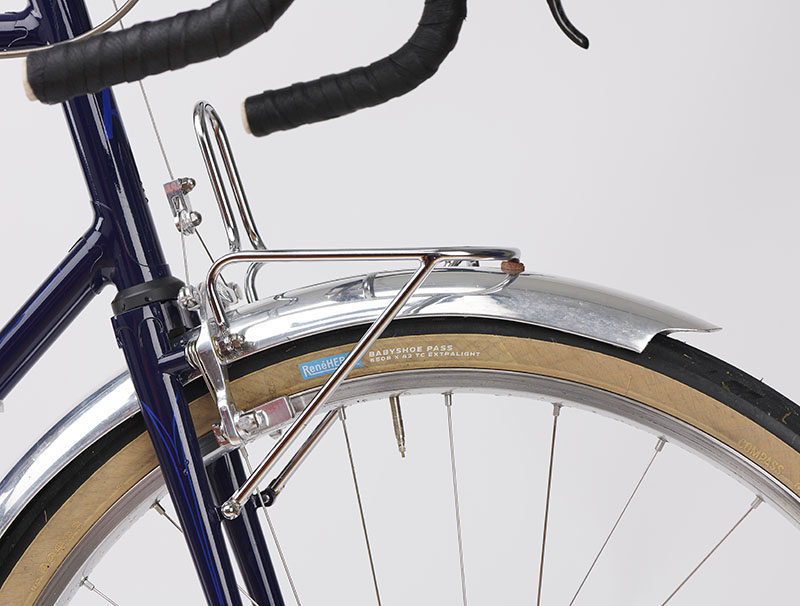
For optimum handling, the bag should sit as low as possible on top of the front wheel. That is best achieved by supporting it with a small front rack. Since the bag doesn’t need to support much weight, it can be superlight, and the combined weight of rack, decaleur and bag is about the same as that of a bag that attaches only to the handlebars.
My bike uses the Rene Herse CP-1 rack that is designed to work with our centerpull brakes. It’s fillet-brazed from ultra-strong Cromoly tubing and chrome-plated for durability. At 168 g, it’s lighter than any other rack on the market, and its finish rivals the best custom racks. It attaches securely, and it even includes mounts for my light (not visible on the other side of the wheel) and the fender.
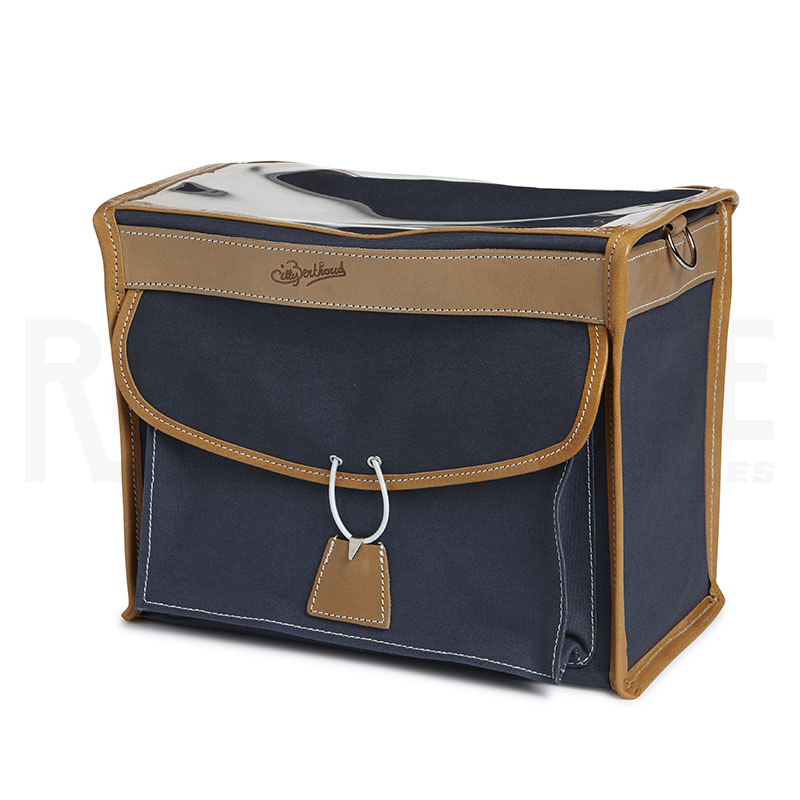
As to the bag itself, I think Berthoud’s classic bags are still the best ever made. Long before we started selling them, I called them ‘unimprovable.’ With more than 50 years of experience, these bags are sewn in France by hand from waterproof cotton, and edged with leather. These traditional materials are lightweight – lighter than most ‘modern’ bags. And since the cotton swells when it gets wet, its waterproofness doesn’t rely on coatings that tend to wear off over time.
This really works – when it rained for 45 out of the 50 hours it took me to ride PBP in 2007, I was surprised that the contents of my Berthoud bag remained dry at the finish.
My bag is a little bigger than I need for PBP – it’s sized to fill the space between the front wheel and the handlebars – but it’s nice to have that extra capacity if I want to pick up some pastries at a control to eat on the road. The weight of the bag is in the edging, pockets and flaps, so the larger bag weighs only marginally more than a small one.
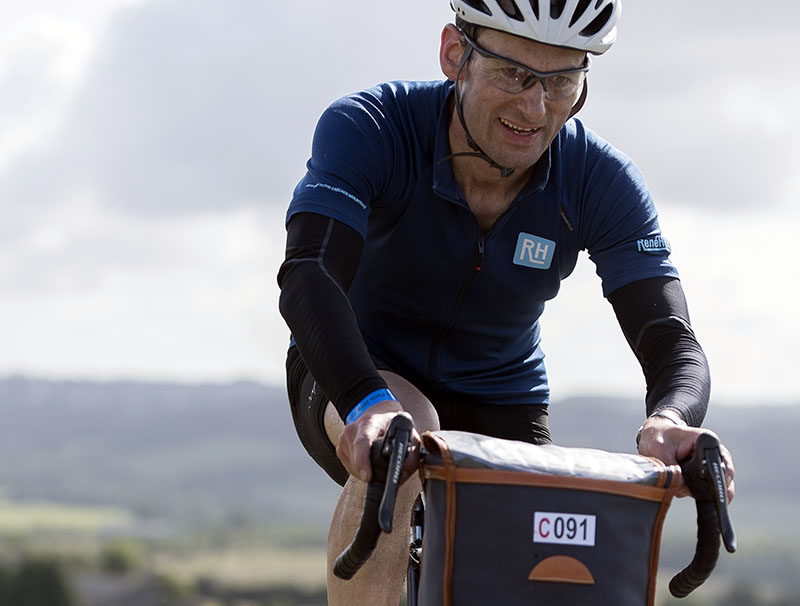
The bag solution of my bike may be a bit more complex than just strapping a bag to the saddle, but it really contributes a lot to the enjoyment of my riding. When I ride bikes without a bag, I need to plan carefully what I wear, since there is no place to put the extra clothes if I want to take them off. When I get it wrong, I shiver during mountain descents, or I sweat as the day gets warmer than the forecast predicted. An empty bag weighs very little, it improves the aerodynamics, and it even allows me to pick up vegetables at the Farmers’ Market on the way home from a ride.
Other parts in this series:
- My PBP bike: the frame
- My PBP bike: the wheels
- My PBP bike: contact points
- Why I choose centerpull brakes
- My PBP bike: fenders
- My PBP bike: lights
- My PBP bike: derailleurs
Photo credits: Maindru (Photo 2); Duncan Smith (Photo 7); Nicolas Joly (all others).


